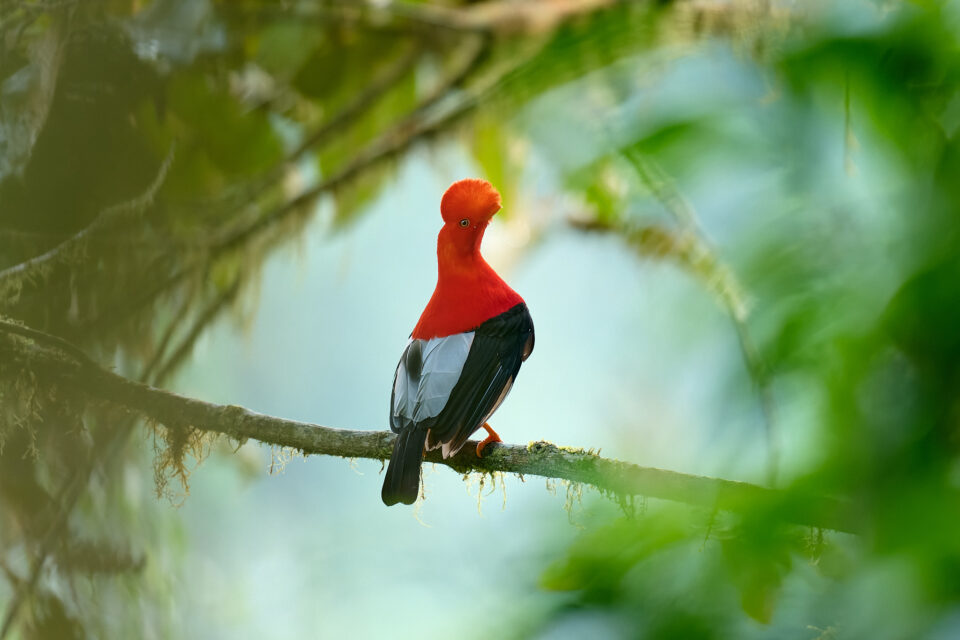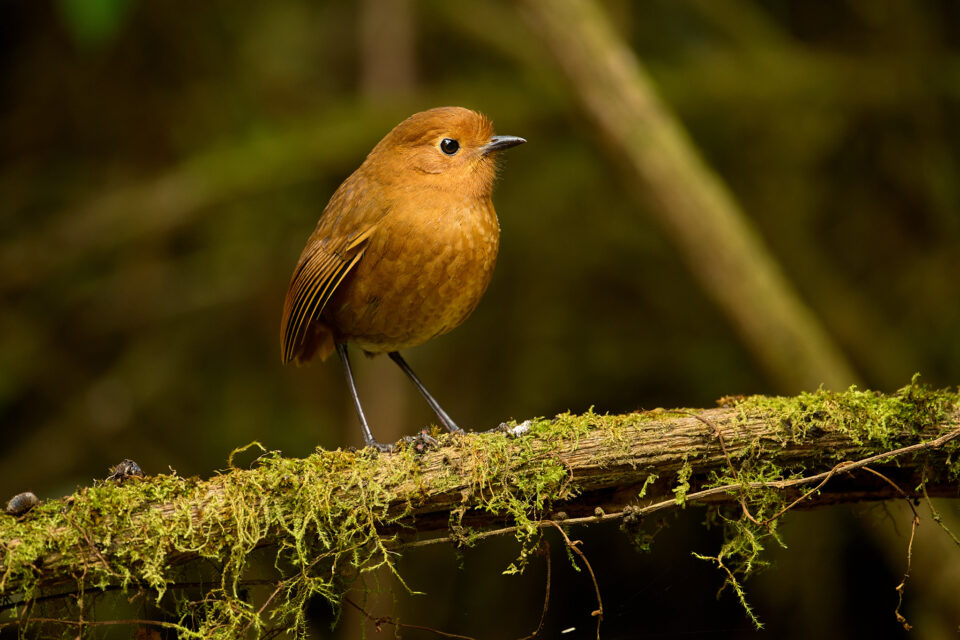During my expedition to the Ecuadorian Andes, I had the opportunity to observe and compare the performance of three high-end mirrorless cameras: the Canon EOS R5, Nikon Z9, and Sony A1. As we ventured through the montane cloud forest, these cameras were often pointed at the same birds, allowing me to notice the differences in their approaches to capturing these subjects, particularly in terms of eye detection.
Let me introduce the cameras in question. The Canon EOS R5, although the oldest among the trio, is still considered one of Canon’s most comparable cameras to the Z9 and A1 in terms of high speed and resolution. The Nikon Z9, a newcomer with bird eye autofocus, marked a significant advancement in Nikon’s mirrorless lineup. Sony’s A1, released approximately six months later, expanded on their existing eye autofocus technology by officially recognizing bird’s eyes as a subject.
All three cameras offer automatic animal eye detection, a highly discussed feature in the photography community. Canon’s R5 and R6 gained popularity for their exceptional animal eye detection, contributing to their status as professional tools and best-sellers. Sony, having implemented eye autofocus since 2013, added bird’s eyes to its recognized subjects with the A1. The Nikon Z9, introduced a year ago, made a strong impression by recognizing bird’s eyes as well, attracting photographers who value this capability.
To ensure a fair comparison of autofocus performance, it was important to use comparable lenses. Fortunately, during my expedition, my colleague with the Canon used the RF 600mm f/4 lens, while the Sony and Nikon shooters utilized the latest 400mm f/2.8 lenses. We occasionally supplemented the 400mm lenses with 1.4x teleconverters to extend the reach, further enhancing our ability to capture birds in detail.
Through this unique opportunity, I was able to witness the capabilities and nuances of these top-tier cameras in real-world scenarios. In the following sections, I will delve into my observations and experiences with their autofocus performance and shed light on the strengths and differences of each camera.

In the beginning of this piece, I said that the performance of the cameras astonished me to a certain extent. Although that’s not the case however, the majority times, the focus worked flawlessly. However, I won’t discuss the details in this piece otherwise it will begin to resemble an advert. Instead, I’ll tell you instances where AF systems were faced with a problem.
Then, in the course of our analysis of Nikon Z9, in the section on continuous focus I noted that the Z9 can focus the most easily upon the birds’ eyes that appear like the typical bird. It is, for example, something in that is between a sparrow and bird called a hen. In these instances the algorithms of Z9 are almost flawless and detect the bird’s eye with the brilliance of an expert anatomist. Birds that fall within the morphological box happen to be most of the time.
There are also birds that look like “typical” birds but only far away, and they could cause problems for the AF system. For instance an Woodcreeper walking through a tree’s trunk is often hard for AF to discern. It’s not that it doesn’t acknowledge the existence of the bird completely, however, the Z9 signifies that it’s focused on the whole bird, not just focusing on the eye. This is most likely to happen in extremely dim light in the middle of the day. the bird’s image is also in the smallest space in the viewfinder.
It wasn’t an issue with Nikon issue. In the sporadic mutterings from the Sony photographer sitting next my camera, I observed that our cameras were more likely to fail on birds similar to ours and neither of our AF systems was perfect in this area regardless of how great they are generally.
Perhaps the most difficult moment for us both of us was when we took pictures of one of the most famous kinds of the middle Andean slopes, the Andean Cock-of-the-rock. The name could make it appear that it is the rooster, however it’s not so you’ll have to decide your own.

Males of the Andean Cock of the Rock appear to do not have beaks. They have a beak, but it’s hidden under their fanciful design of crest. Another unique feature can be seen in the color they choose to. On the eastern part of the Andes the color is deep orange, while on the western side it’s red. This means that the majority of bird’s appearance is rendered by the camera’s red channel! Females from this species are evidently attracted by the distinct look of males. Our cameras weren’t.
The issue is that males start mating at dawn, which is when the forest is pitch-black. When it looks like you could reach an acceptable ISO values it’s over. Good autofocus and fast lenses systems are extremely useful in this case.
What did our three cameras do? In the present, as an overall happy Z9 owner I’d think that my camera surpassed every other one however that isn’t the case. Also, I can’t offer Sony admirers a kudos this time, despite the fantastic A1. While I was shooting side-by -side with a friend using the A1 and we were constantly asking one another questionslike “Is your camera focused on the eyes?” “Not a bit no!” “Me neither!”

It’s incredible that a bird’s eyes is shining into the forest at night as a light source can be so hard to spot in the systems of two of the most modern cameras around the globe. Of course, it’s not that the cameras weren’t focusing on the eye at all! The issue was that the eye detection system never focused on the eye as it does with other birds. When the light conditions got better the autofocus system of the Z9 and A1 each gained ground and would be able to lock on to the eye more frequently but not all the time.
In the end, it was my friend with the most expensive and oldest of the three cameras that I tested, the R5 that performed most well. When I asked him about the reliability of the focus upon the eyes, he answered positively nearly every time. His R5 seemed to pay much more time to the biology courses; the Andean Cock-of-the-rock simply did not pose as much of an obstacle for Canon as it did Nikon or Sony.
The AF settings on all three cameras were similar. We typically used a smaller focus field or a single point for pre-focusing onto the birds’ body. We then used a different button to enable a larger area, such as the Wide-area Focus (L) as in my instance. It’s a fairly effective method to focus in cases where the bird is caught in the middle of a tree, and a too large focal area could result in the lens being focused on branches in the background.
To ensure the accuracy of our abilities in photography, I examined the autofocus behaviour of the cameras with the same subject. It was my turn to be the only one to focus each time. There’s a highly accurate Andean Cock of the Rock relief located on the side wall of the Angel Paz lodge. Color, design and stance is in line with the real world. (Well it’s not that size. It is considerably larger than reality.) With the cameras mentioned above I was able to focus on the eyes.

Canon discovered the eye right away. Nikon was unable to see it as an object and remained focused on the rest of the wall. After some convincing with 3D tracking the camera finally located that it was at the very least feeding on its head. It was also noted that the Sony A1 also didn’t lock to the eye.
It is possible that there are certain birds that cause an contrary AF behavior, in which Canon EOS R5 is one of them. Canon EOS R5 is the one that fails, while the other birds achieve. However, I haven’t seen an example of this out in the field. It was the EOS R5 focused on the eye of every bird we observed at a minimum.
As an Nikon Z9 owner, I was extremely satisfied by the quality of camera a lot times (and my friend who had the A1 was the same way regarding his Nikon camera). I was occasionally shocked by what kind of creature Z9 could accurately recognize as bird. Certain kinds that belong to South American birds are so mysterious that they could fool the human eye or even the sharp eye of predators. The most masterful in camouflage are the genus Nyctibius or Potoos. These nocturnal birds hunt for locations during the daytime where they, once perched, appear like the ends of an unbroken branch or trunk.

We captured one rather unusual member of this genus: the Long-tailed potoo, which is found located in the Amazon rainforest. However, even this hidden occupant of the forest’s shadow wasn’t difficult for any of our three cameras when it came to eye-AF.
Therefore, I’ll finish my post with a positive note. Despite the amazing variety in bird forms, sizes and colors, all of today’s top-of-the-line mirrorless cameras can identify their eyes with ease. There are some variations for the most bizarre-looking birds, and I was amazed that the most old-fashioned, least cost EOS R5 came out ahead with the Andean Cock of the Rock specifically, but all of cameras are extremely reliable overall.
There’s also a possibility that firmware updates can help fix these issues. Who is to say? I’m always learning more about the biology of birds, and Nikon, Sony, and Canon are also able to do so. I’m looking forward to coming back next year to see what’s changed.
What do you think of Canon EOS R5/R6, Sony A1, or Nikon Z9 users? Have you encountered some species of bird or mammal that the camera was unable to locate the eye? I’d like to know about your experiences in the comments section below this post, and I’m sure the owners of cameras like these will be, too.













Leave a Reply